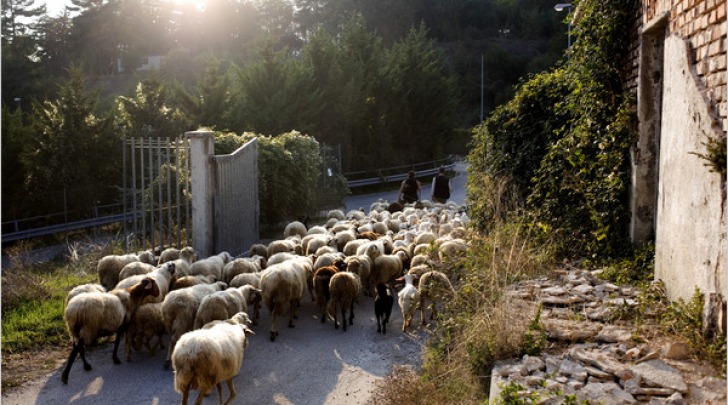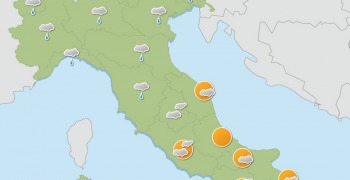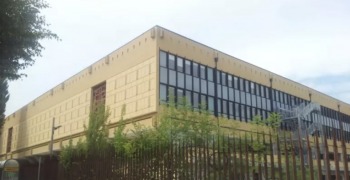Il New York Times elogia tempi record ricostruzione in Abruzzo
Il New York Times, abituato a bacchettarci, per una volta ha elogiato l'Italia per la rapidita' della ricostruzione in Abruzzo dopo il terremoto del 6 aprile.
In un articolo sull'iniziativa 'Tracturo 3000', sul rilancio della transumanza da parte di alcuni volontari, il Nyt ha sottolineato che "il governo ha costruito centinaia di nuovi appartamenti in tempi record rispetto alle risposte date ad altri disastri del passato.
Oggi 5.400 persone vivono in nuovi alloggi, numero destinato a salire a 17.000 a gennaio secondo le stime della Protezione Civile".
Il piu' prestigioso quotidiano d'America ha anche riconosciuto al "primo ministro Silvio Berlusconi di aver ripetutamente visitato l'area sulla cui ricostruzione si e' giocato l'immagine del suo governo".
L’AQUILA JOURNAL: AFTER QUAKE IN ITALY, SEEKING GREENER PASTURES
«Dopo il terremoto in Italia, alla ricerca di pascoli più verdi»
L’AQUILA, Italy - site web: www.nytimes.com - On a recent autumn afternoon, half a year after a devastating earthquake struck here, a small flock of sheep and goats made its way through the ghostly, ravaged center of this ancient hilltop city.
Trotting at a rapid clip, the bells around their necks clanking merrily, the animals kept mostly to one lane as bewildered drivers tried to pass, nudging their cars to the front of the herd in classic Italian fashion.
A young couple in a small car smiled warmly and shouted, “Buon viaggio!” while a vanload of irate Carabinieri officers honked impatiently, with one shouting, “Move those sheep already!”
The flock was organized, if one can say so, by Tracturo 3000, a small group of local activists, animal-lovers and dreamers to celebrate an ancient tradition in the rugged central Abruzzo region: the annual migration of the flocks from summer pastures in the central Apennine Mountains east to winter pastures in the Puglia region on the Adriatic.
This fall, the tradition assumed even greater resonance, as the flock passed through the areas hardest hit by the April 6 quake, which killed nearly 300 people and destroyed or seriously damaged thousands of buildings, often because of faulty building practices.
Until World War II, Abruzzo was largely agricultural. Tenant farmers worked the rocky terrain through hot summers and punishing cold winters. Many emigrated to escape dire poverty and an earthquake that killed thousands in 1915.
For centuries, shepherds made the journey with their flocks until flatbed trucks came into use in the 1950s. Fueled by nostalgia and a deep sense of place, Tracturo 3000 has made the trek on foot for the past three years, borrowing flocks from local shepherds along the way.
Using old maps and looking for traces in the landscape, they have charted 150 miles of paths from L’Aquila southeast to Foggia in the Puglia Region. Once on the king’s land, the paths were appropriated by the new Italian state in the 19th century, which often built stretches of railroad along them.
Tracturo 3000 one day envisions a formal trail, akin to the network of pilgrimage routes leading to the Cathedral of Santiago de Compostela in Spain, by legend the tomb of St. James, where tourists could stop at rustic inns and taverns along the way.
“Our goal is to get recognition by Unesco,” said Pierluigi Imperiale, a veterinarian and L’Aquila native who founded Tracturo 3000. The paths belong to the heritage of humanity, he added, as he led the herd past apple trees — and many ruined houses.
Mr. Imperiale and others see preserving the region’s agricultural past as a key to its future. The idea may not be so far-fetched. In an interview last summer, Guido Bertolaso, the head of Italy’s Civil Protection service, said he thought tourism was central to the area’s revitalization.
Prime Minister Silvio Berlusconi has made repeated visits to the area and staked much of his government’s image on the rebuilding effort.
Il Primo Ministro Silvio Berlusconi ha fatto ripetute visite all’area e ha legato «buona parte dell’immagine del governo» allo sforzo di ricostruzione.
The government has built hundreds of new apartments in record time compared with responses to past natural disasters in Italy. Today, 5,400 live in the new housing; by January the number is expected to rise to 17,000, according to the Civil Protection Agency.
Il governo ha costruito centinaia di case in un «tempo record» rispetto alle risposte date in passato dall’Italia ad altre catastrofi naturali. Oggi 5.400 persone abitano in case nuove, numero che dovrebbe salire a 17mila entro gennaio, secondo la Protezione Civile.
Yet the problems are far deeper. The quake destroyed the region’s economy. Thousands of businesses are closed. Nearly a quarter of L’Aquila’s 80,000 residents receive government unemployment support, officials say, while more than 20,000 are scattered around the region in provisional housing, among them 13,000 in hotels and 8,000 in houses on the Adriatic coast. Some live in their own second homes.
Ma i problemi sono molto più profondi. Il terremoto ha distrutto l’economia della regione. Migliaia di imprese sono chiuse. Circa un quarto degli 80mila residenti de L’Aquila ricevono sussidi pubblici di disoccupazione, mentre più di 20mila sono sparpagliati in abitazioni provvisorie, 13mila in alberghi e 8mila in case sulla costa adriatica. Alcuni abitano nelle loro seconde case.
The University of L’Aquila, a pillar of the local economy, has largely reopened, but its 28,000 students have lost their college town. With no historic center or economic base, experts warn of radical depopulation. “I’m fighting to stop people from leaving L’Aquila definitively,” said Stefania Pezzopane, the president of Abruzzo Province.
L’Università de L’Aquila, «un pilastro dell’economia locale», è stata in gran parte riaperta, ma i suoi 28mila studenti hanno perso la loro città universitaria. Senza centro storico, né base economica, gli esperti mettono in guardia contro il rischio di uno spopolamento radicale. ''Stiamo lottando per evitare che la gente lasci L’Aquila definitivamente'', dice Stefania Pezzopane, presidente della Provincia.
Worst off are the nearly 800 people still living in makeshift accommodations. In the fall, the sheep and walkers passed a tent camp in the center of L’Aquila.
Peggio di tutti stanno le 800 persone che abitano ancora in alloggi di fortuna, nelle tende. Quest’autunno, il gregge è passato davanti a un accampamento di tende a L’Aquila.
A group of teenagers with elaborate face piercings drew closer and peered at the flock through a chain-link fence. “We want to come, too!” they said.
Past the blue tents, the road led to the seriously damaged 14th-century Basilica of Santa Maria di Collemaggio, swathed in scaffolding with a picture of its rose-windowed facade. For hundreds of years, clergy blessed shepherds and flocks before the trek to winter pastures.
The basilica is one of 45 monuments that the Italian government is raising money to help rescue, many in L’Aquila’s historic center, whose countless ruins are guarded by the police and closed off to the public. How to restore the once-picturesque city is a topic of intense debate, and experts estimate that it will take years to decide how to proceed.
La Basilica di Santa Maria di Collemaggio, uno dei 45 monumenti danneggiati per i quali il governo italiano sta raccogliendo fondi. Su come restaurare la città, un tempo pittoresca, è argomento di intenso dibattito e gli esperti stimano che ci vorranno anni per decidere come procedere.
“What we miss is the beauty of the historic center,” Mr. Imperiale said as he walked with the herd, a carved stick in hand.
“We’re not angry with the government, we’re waiting,” he added. “We Abruzzesi are patient, but we’re also very tough.”
As the sun began to set and a sliver of moon rose behind the Apennines, the flock headed through the village of Bazzano, with its newly built apartment complexes, before coming to rest in the village of Onna, which lost 40 of its 350 residents in the quake and whose small downtown still lies in ruins.
Dusk had fallen, and the sheep were led to pasture. They made their way through brand-new streets lined with new wooden houses and a school, not unlike an American subdivision: semi-permanent housing for Onna’s quake survivors.
The walkers stopped at an old, gnarled tree. A golden Madonna stood at its base, glowing under the new streetlights. On the day of the earthquake, the tree had become a makeshift morgue, with coffins lying underneath.
Then it stood amid pastureland. Today it stands between new wooden houses. A plaque with the names of Onna’s dead sits at its base.
The new houses are cozy but anonymous, residents say. Laundry hangs outside some, and there are geraniums on a few windowsills, signs of normalcy.
“People are out of tents and living in houses now,” said Marzia Masiello, a spokeswoman for the community of Onna and a founding member of Tracturo 3000, as she stood outside her small one-bedroom house. “But only now do we really begin to feel what we have lost.”
La gente non è più nelle tende e adesso abita in case nuove», dice Marzia Masiello, portavoce della comunità di Onna e socia fondatrice di Tracturo 3000. Ma solo ora cominciamo davvero a sentire quello che abbiamo perso.
Jessica Donati contributed reporting from Rome.



















